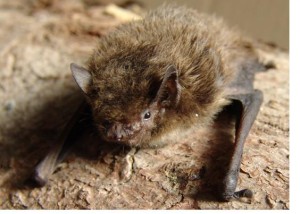TUESDAY, 31 MAY 2011
 The 20th century has been defined by the domination of cities on our human planet. The magnetic pull of culture, employment and community has seen urban areas worldwide flourish into melting pots of human diversity. But now a team of German researchers has found that urban bats also live in a more diverse environment than their rural chiropteran counterparts.
The 20th century has been defined by the domination of cities on our human planet. The magnetic pull of culture, employment and community has seen urban areas worldwide flourish into melting pots of human diversity. But now a team of German researchers has found that urban bats also live in a more diverse environment than their rural chiropteran counterparts.Milenka Mehr and her colleagues from five European institutions studied whether the number of different species of bats in an area was more affected by its climate or its dominating land-use [1]. In addition to finding more bat species per area around land dominated by forests, Mehr also found that the greater the amount of land area associated with human activity, the greater the bat ‘species richness’. The researchers were keen to emphasise that the study was focused on regional scales of diversity, accomplished by splitting Bavaria into a mosaic of study grids, and at this scale environmental factors are more important than large scale extinction and speciation events.
The findings that cities are providing suitable habitats for a wide range of species, Mehr writes, “underline the importance of urban areas for the conservation of bats”.
Written by Nick Crumpton
